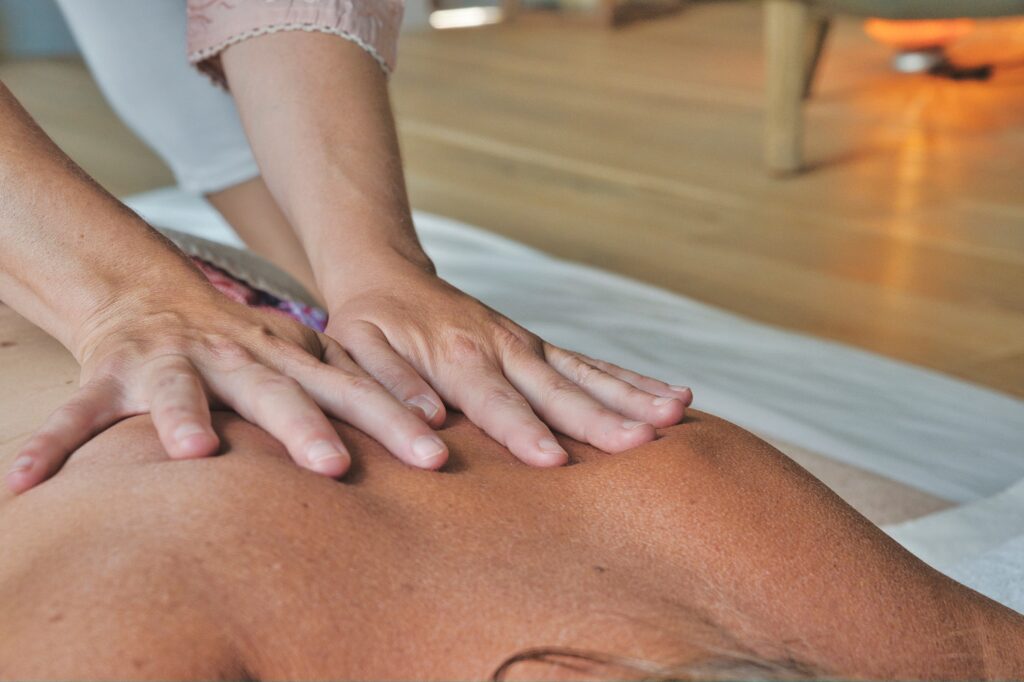
Facing death can be a challenging experience, both for those nearing the end of their journey and for their loved ones. However, it is essential to recognize that the presence of discomfort or pain doesn’t necessarily equate to suffering. How we approach and manage discomfort, particularly during this profound period, significantly impacts our quality of life. I often explore the dynamics of end-of-life pain with my clients, including the mind-body connection, and the transformative power of somatic therapy in alleviating suffering and promoting peace.
Understanding End-of-Life Pain
Pain is a complex phenomenon that encompasses physical, emotional, and psychological dimensions. It manifests in various ways, including physical symptoms such as aches, discomfort, and fatigue, as well as emotional and existential distress.
Helping my clients understand the sources of end-of-life pain is crucial for effectively addressing and mitigating it.
Physical Pain
Terminal illnesses often bring physical discomfort, which may be caused by the disease itself or its various treatments. This ranges from mild to severe and requires different forms of management, such as medications or interventions.
Emotional and Psychological Pain
As individuals approach the end of life, they may grapple with emotional and psychological distress, including fear, anxiety, grief, and existential suffering. These emotional and psychological aspects of pain can be just as challenging as physical discomfort. The symptoms are often trickier to treat than the physical variety.
Suffering vs. Pain
We must distinguish between pain and suffering. Pain is the physical or emotional sensation of distress while suffering refers to the perception and interpretation of pain. Suffering often arises from our thoughts, emotions, and reactions to pain rather than the pain itself.
Transforming Pain through Mind-Body Connection
Our perception and experience of pain are deeply intertwined with the mind-body connection. By recognizing this connection, individuals learn to transform their experience of pain and reduce unnecessary suffering.
Mindfulness and Pain Awareness
Mindfulness practices, such as meditation and deep breathing, help individuals become more aware of their pain without judgment. This heightened awareness leads to a shift in perception and reduces suffering.
Emotional Regulation
Acknowledging and processing difficult emotions helps individuals find emotional relief. Therapies like psychotherapy, counseling, or support groups provide valuable tools for emotional regulation.

Acceptance and Meaning-Making
Finding meaning in the face of suffering is a powerful coping mechanism. My clients often find solace in spirituality, personal reflection, and connecting with loved ones to make sense of their pain.
Somatic Therapy: Alleviating Pain and Suffering
Somatic therapy is an approach that recognizes the profound connection between the body and mind in healing and well-being. It emphasizes the importance of holistic, embodied practices to release physical and emotional tension, promoting overall comfort and well-being during the end-of-life journey.
My clients do this through a range of practices and therapies that focus on the body’s experiences and sensations as a means of healing and transformation.
Somatic Experiencing (SE)
Developed by Peter A. Levine, SE is a body-oriented approach to healing trauma and stress. It helps release pent-up physical tension and trauma stored in the body through a guided process that includes tracking bodily sensations, promoting awareness, and facilitating the completion of the body’s stress responses.
With somatic experiencing, my clients truly feel the traumatic experiences rather than just recall them. Engaging in intentional body movement helps them process and release the stress and tension that has been locked away.
Feldenkrais Method
The Feldenkrais Method is a movement-based somatic therapy that aims to improve awareness and coordination by exploring different movement patterns and body positions. Through gentle and mindful movements, my clients release muscular tension, improve posture, and enhance mobility.
For example, some clients lie on a low table while a therapist gently moves or presses their body in different directions. These movements bring awareness of subconscious tension and holding patterns that contribute to discomfort or pain. They also introduce more efficient ways of moving and coordinating your body to reduce discomfort.
Hakomi Therapy
Hakomi is a body-centered psychotherapy that combines mindfulness and somatic techniques. It explores how our beliefs, emotions, and early experiences are stored in the body and uses this awareness to promote healing and personal growth.
Therapists help clients identify physical manifestations of unconscious beliefs that show up in our facial expressions, gestures, and postures. Knowing why we express ourselves the way we do can challenge us to change negative beliefs and outcomes. This may reduce pain and lead to a more comfortable end-of-life experience.
Body-Mind Centering (BMC)
BMC is an approach that emphasizes the connection between physical movement, body awareness, and emotional well-being. Practitioners explore various body systems, such as the skeletal, muscular, and nervous systems, to foster a deeper understanding of our bodies and emotions.
Therapists explore different systems of the body through movement, touch, and visualization. When clients visualize their bodies and add movement, hands-on explorations, and sound, they go deeper into themselves. Sometimes, specific psychological information comes up and, with processing, increases comfort.
Rolfing Structural Integration
Rolfing is a hands-on bodywork technique. It focuses on manipulating the body’s fascia, the connective tissue that surrounds muscles and organs. Rolfing aims to improve posture, alleviate chronic pain, and enhance overall well-being by realigning the body’s structure.
Somatic Movement Therapy
This therapy incorporates movement practices, such as dance and yoga, to facilitate self-awareness, emotional expression, and stress reduction. Somatic movement therapists guide clients in exploring how their bodies respond to movement and emotion.
Craniosacral Therapy
Craniosacral therapy involves gentle touch and manipulation of the craniosacral system, which includes the skull, spine, and cerebrospinal fluid. It is believed to help release restrictions in the body’s connective tissues and promote relaxation and balance.
Mindful Movement Practices
Yoga, tai chi, qigong, and other mindful movement practices emphasize the integration of breath, movement, and awareness. These practices improve physical flexibility, reduce stress, and enhance emotional well-being. Many of these practices can be done in beds or chairs, which is especially helpful for my clients at the end of life.
Breathwork
Various breathwork techniques, such as Holotropic Breathwork and Transformational Breath, focus on conscious and controlled breathing patterns. Breathwork induces altered states of consciousness, releases emotional tension, and promotes relaxation.
Meditation and Mindfulness
While not exclusive to somatic healing, meditation and mindfulness practices are essential components. They involve cultivating awareness of bodily sensations, thoughts, and emotions, which leads to greater self-understanding and stress reduction.
Biofeedback
Biofeedback uses electronic monitoring to provide you with real-time information about physiological processes like heart rate, muscle tension, and skin temperature. This feedback helps you learn to regulate these processes consciously. This is especially helpful if you’re seeking a conscious dying experience.
Somatic Psychotherapy
Somatic psychotherapists integrate talk therapy with somatic techniques, like the ones above. This helps to address emotional and psychological issues by exploring their physical manifestations and origins in the body.

The Role of Somatic Healing in End-of-Life Care
Somatic healing plays a crucial role in end-of-life care by helping my clients reconnect with their bodies, release tension, and foster a sense of inner peace. In general, it reduces pain and:
- Helps release physical and emotional tension, leading to reduced stress levels. This results in improved overall relaxation and a greater sense of calm.
- Promotes a deeper connection to the body and its sensations. Increased body awareness leads to better posture, enhanced movement patterns, and a greater understanding of the body-mind connection.
- Recognizes that emotional experiences are stored in the body. These therapies provide a safe space for my clients to process and release repressed emotions, leading to emotional healing and greater emotional resilience.
- Teaches us how to regulate our own physiological and emotional responses. This self-regulation leads to better management of emotions, stress, and anxiety.
- Is a pathway to personal growth and self-discovery. It allows you to explore your body, emotions, and thought patterns in a safe and supportive environment.
- Reduces physical tension and stress leading to improved sleep quality. This makes somatic healing beneficial for those struggling with getting enough rest at the end of life.
- Addresses the physical and emotional effects of stress and trauma. Somatic healing helps individuals build strength in the face of life and death’s challenges.
Suffering is Optional
End-of-life discomfort is an inevitable part of the human experience, but it doesn’t have to lead to suffering. By embracing the mind-body connection and exploring somatic healing practices, those facing death can transform the experience of pain, find comfort, and cultivate peace.
Amid life’s most profound challenges, there exists an opportunity for healing and growth, allowing you to approach your death with greater serenity and dignity. Reach out to me at Anitya Doula Services for support today.


Recent Comments